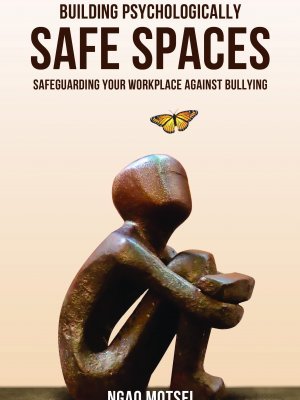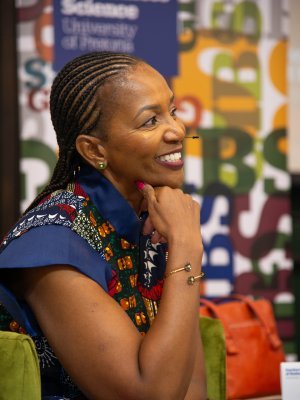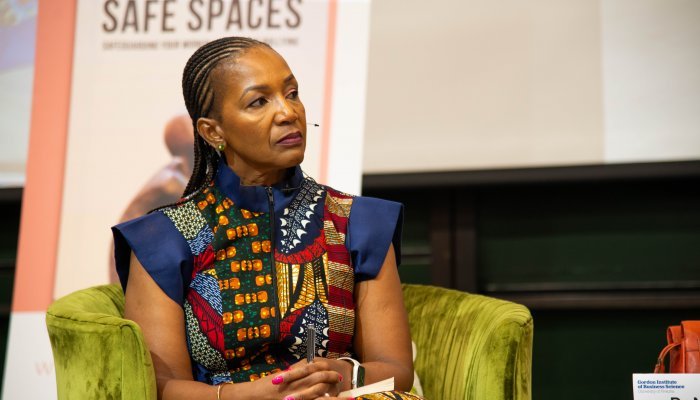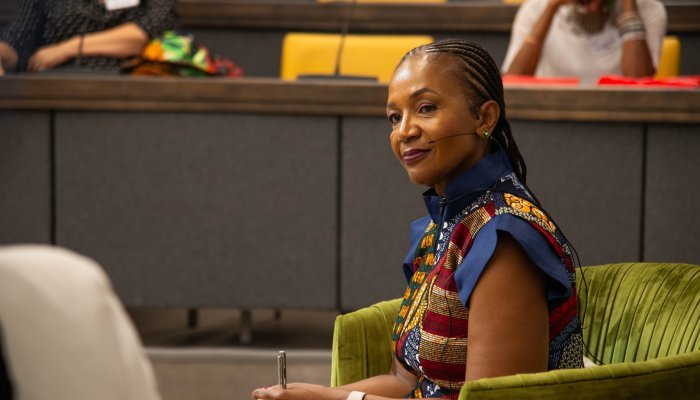Dr. Ngao Motsei recently launched her first book, Building Psychologically Safe Spaces: Safeguarding Your Workplace Against Bullying. It offers a holistic, research-based examination of the ecosystem of bullying. It provides valuable insights not only to leaders and those affected by bullying in the workplace but also to anyone interested in ways to create psychologically safe workspaces.
Acumen chatted to Dr. Motsei about workplace bullying and how businesses can tackle the issue to create psychologically safe spaces.
Where did your interest in workplace bullying stem from?
The short answer is, I was bullied. What was interesting was when I was going through this, I did not know that I was being bullied. At the time, very little was written about the subject. Then, when I realised I was being bullied, I went through a stage of denial. I thought, “I cannot be bullied” because there are so many misconceptions about bullying. These include the widespread belief that bullied people are weak or timid and that they cannot stand up for themselves. But ultimately, the experience, as horrid as it was, taught me several important lessons. At the point that I accepted that I was being bullied, I went into a deep, reflective space and started reading about and researching the subject for my PhD.
What is the prevalence of bullying in South African organisations?
Studies into workplace bullying in South Africa are still in their early stages. That said, studies point to a high prevalence. For example, a 2018 study by Coetzee and Van Dyk entitled Workplace Bullying and Turnover Intention: Exploring Work Engagement as a Potential Mediator found that 70% of the 373 people surveyed recorded being bullied.
How do you define workplace bullying?
Unlike harassment, part of the complexity of bullying is that there is no universally defined and agreed definition of what bullying is. Having said that, there is agreement in terms of the key features of bullying. It is behaviour that is repeated over a period of time, it is persistent, and it is harmful to the target (the person who is being bullied). Bullying is systematic, and there is a pattern of repeated behaviour metered to the target. What is great is that for the first time in South Africa, we have a legal framework that speaks to workplace bullying – the Code of Good Practice on the Prevention and Elimination of Harassment. This code defines behaviours that are considered to be bullying. At its core, the Code defines bullying as unwanted behaviour that impairs dignity and conduct and creates a hostile environment. It is behaviour that is calculated to induce submission.
As serious as bullying is for its target, it is just as serious for employees to falsely accuse others of bullying. To this end, in the book, I address the difference between bullying and reasonable or tough management action, where managers hold people to account based on agreed-upon performance objectives. If people are not meeting their targets, management has every right to hold them accountable. The problem becomes how they do so.
In your book, you use a number of case studies. One that stood out to me was a woman who didn’t even realise that she was a bully.
The first reaction I get from abrasive leaders accused of bullying is typically, “I am not a bully, I am just a hard manager, I manage performance and hold people accountable.” Through my sessions, I have come to realise that many of these abrasive leaders have little to no self-awareness of how their behaviour impacts their direct environment.
What has also become apparent to me is that the bullying behaviour has become part of the abrasive leaders’ "success" and social conditioning to succeed. Today, many organisations are pressured and are expected to do more with less. This pressure filters down to the rest of the organisation, often through coercive leadership styles, to get desired results. Before you know it, getting results through coercion becomes “the way we do things around here”, which then turns into a culture of bullying.
How do bullies respond to coaching?
Their first response is often absolute shock and hurt. Hurt that "is this the thank-you I get from the organisation after consistently performing well and producing results over the years?" This is because many leaders accused of bullying tend to be high performers. In the beginning, there is a lot of defensiveness and anger, therefore it is difficult. For the coaching to work, the abrasive leader accused of bullying must be willing to go where not many leaders dare to go, being prepared for the mirror to be held up in front of them, to face how they show up as a leader, blind spots and all.
What do businesses have to do to create safe, bully-free environments?
A culture of bullying typically starts at the top. Every leader casts a shadow across the organisation. This stems from what they say, how they behave, what they prioritise, and what they pay attention to, or measure. In my workshops, I explain how leaders can, often inadvertently, contribute to the creation of a bullying culture.
The first thing leaders need to do is admit there is a problem. Behaviour that undermines a person’s dignity is enough for leaders to take a complaint seriously. I remind leaders that by not taking action, it makes them complicit, and it sends an indirect message that bullying is acceptable. I also urge them to bring the implicated bully into the conversation once a claim of bullying has been made against them, explaining the process to be followed in investigating the allegations.
It is not enough for organisation to state that they have a zero tolerance to bullying. The zero bullying tolerances must be backed by actions such as developing specific anti-bullying policies and putting in place processes and procedures for dealing with reported cases of bullying, as well as socialising these in the workplace to ensure that all employees understand what behaviour constitutes bullying, including what to do if they suspect being bullied, or see someone being bullied.
I also urge employers to establish support processes to help bullies gain self-insights through specialised coaching. No bullying intervention is likely to work without including abrasive leaders accused of bullying as part of the solution.
In your book, you describe different types of bullying; it is not always top-down.
Bullying happens at all levels. It can be managerial, where managers bully their subordinates; it occurs between peers; and it can also be upward, where subordinates bully their managers. The common denominator of bullying, irrespective of its level, is a power imbalance. Upward or peer bullying is made possible by the bullies’ proximity to higher levels of power. Typically this happens when the bully has a close relationship with the target’s (peer or manager) line manager. In such cases, the bully often goes "over" their line manager (target) directly to the senior leader.
Your book is very accessible. Who did you aim this book at, and what are you hoping to achieve by writing it?
I wanted anyone who picks up this book to be able to get the message. I want to be able to unlock new perspectives around bullying for the reader and help them think about bullying in the workplace in new ways, using simple, everyday, non-academic language. I wanted it to be relatable to everyone. I wrote it for bullies, targets, bystanders, and leaders and managers who wish to understand the value of creating psychologically safe spaces, including how to create humane work environments. I want the book to give bullies the opportunity to change, and targets the chance to heal and bystanders the courage to speak out. It is also my hope that the book can help employers become proactive in creating a climate where every employee can feel safe to speak up without fear and not wait for something terrible to happen.
There are two great assessments at the back of the book. How can they be used?
The two assessments are not mine. They were created by a colleague, Dr Octavia Mkhabela, and are reproduced with her permission from her book Workplace Bullying – A South African Perspective (first edition). They are simple tools which elicit answers to questions about bullying. The first assessment is for targets of bullying aimed at confirming what is happening to them is, in fact, bullying. The tools help them gather information necessary to help targets confirm that they are indeed bullied or not bullied. It can act as both a reflective tool where people can make sure that what is happening is actually bullying, and it can act as evidence if the matter progresses further.
The second assessment is for leaders. It helps them self-inspect and gather information about how they lead and the impact their actions may be having on people around them. In other words, it reveals what shadow they are casting on the organisation, including their propensity to bully.
Dr. Ngao Motsei’s book is available in digital format from Amazon, and hard copies can be obtained from retail outlets like Exclusive Books or online from Takealot and Amazon.
KEY TAKEAWAYS
- Workplace bullying is endemic.
- South Africa has a legal framework that speaks to workplace bullying.
- Targets often don’t know that they are being bullied.
- Bullies often don’t realise they are bullying.
- Leaders are often inadvertently complicit in allowing a bullying culture.
- Bullying is not only managerial; it can be peer-to-peer and upwardly focused.
- All people involved in a bullying incident need to take time to reflect on the situation.
Dr. Ngao Motsei is an independent leadership consultant, conference moderator and GIBS adjunct faculty. She also trained as a coach who specialises in working with abrasive leaders. She thinks big, thrives on uncertainty and is unafraid to take risks. Ngao’s purpose is founded on the goal of rehumanising the workplace, one leader at a time through fair, facilitated non-judgmental processes that enable clients to find their own sustainable solutions.













